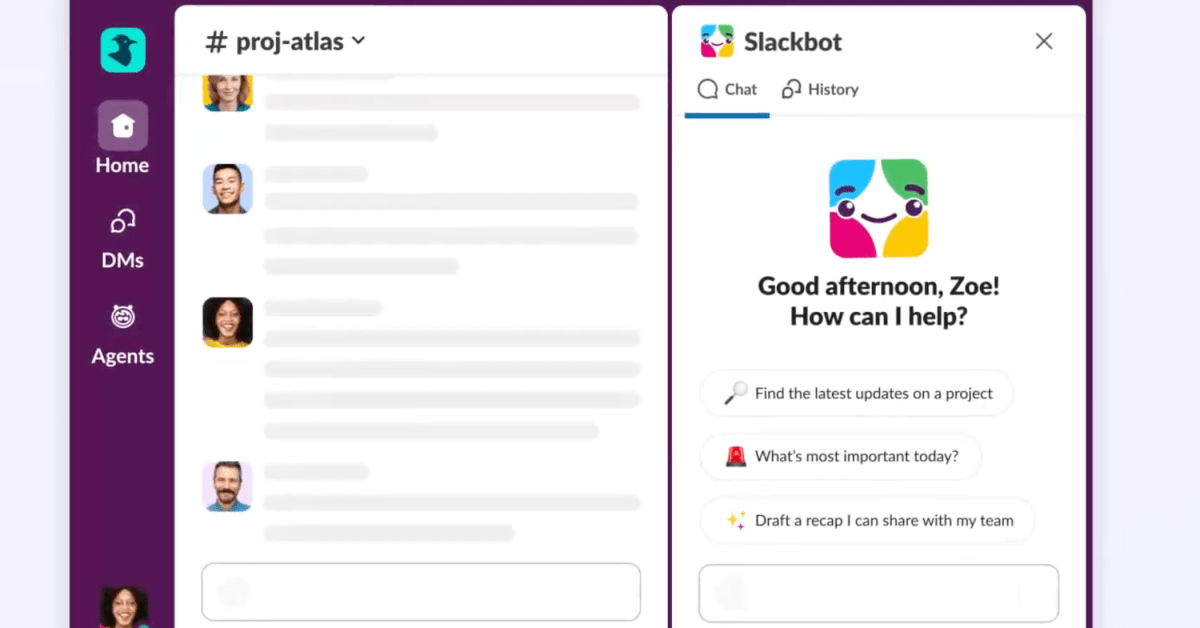Slack Transforms Slackbot into an AI Assistant

Key Points
- Slackbot is being rebuilt as a personalized AI assistant.
- It can create custom plans, search across channels, and pull data from Outlook and Google Calendar.
- The AI bot appears next to the search bar and opens a DM‑style panel for prompts.
- Demonstrations include organizing product launches and generating brand‑consistent social media copy.
- Runs on AWS private cloud; data never leaves the firewall or trains the model.
- Currently used by Salesforce employees; wider rollout planned for later this year.
- Companies may opt out, but individual users cannot disable the AI bot.
- Existing Slackbot features will remain alongside the new AI capabilities.
Slack is testing a major upgrade to Slackbot, turning it from a simple reminder tool into a personalized AI companion. The revamped bot can draft custom plans, search across channels with natural language, pull information from Outlook and Google Calendar, and assist with tasks like organizing product launches or creating social media campaigns. Available to Salesforce employees and in limited pilots, the feature runs on Amazon Web Services’ private cloud, ensuring data never leaves the firewall. Companies may opt out, but individual users cannot, and the rollout is slated for wider release later this year.
Overview of the AI‑Powered Slackbot
Slack is piloting an update that rebuilds Slackbot from the ground up as a personalized AI assistant. While the original Slackbot handled basic reminders and notifications, the new version can generate custom plans, sift through extensive message histories, and gather information from multiple Slack channels.
Key Functionalities
The AI‑enhanced Slackbot appears as an icon next to the search bar. Clicking it opens a direct‑message‑style panel where users can enter prompts such as “What are my priorities for today?” or “Find the latest updates on a project.” The assistant draws on conversations, files, and overall workspace context to deliver tailored assistance.
Demonstrations show the bot organizing a product launch within Canvas by pulling data from various channels, and crafting social‑media copy that matches a brand’s tone. Its natural‑language search lets users ask for documents without knowing exact keywords, for example, “Find me the document that Jay shared in our last meeting.”
Integration with Microsoft Outlook and Google Calendar enables the bot to schedule meetings and coordinate calendars, further streamlining workflow.
Deployment and Privacy
Slack’s AI features operate on Amazon Web Services’ virtual private cloud, meaning no data leaves the company’s firewall and none is used to train the underlying models. The upgraded Slackbot is already in use by 70,000 employees at Salesforce, Slack’s parent company, and is being tested with additional customers.
Organizations have the option to opt out of the AI Slackbot, though individual users within a workspace cannot disable it. Slack plans to make the feature generally available to all users by the end of the year.
Future Outlook
Slack’s senior vice president of enterprise product, Rob Seaman, says the company will continue adding small AI‑driven touches that reduce clicks and enhance productivity. Existing Slackbot capabilities, such as automated messages and custom command functions, will remain intact alongside the new AI features.